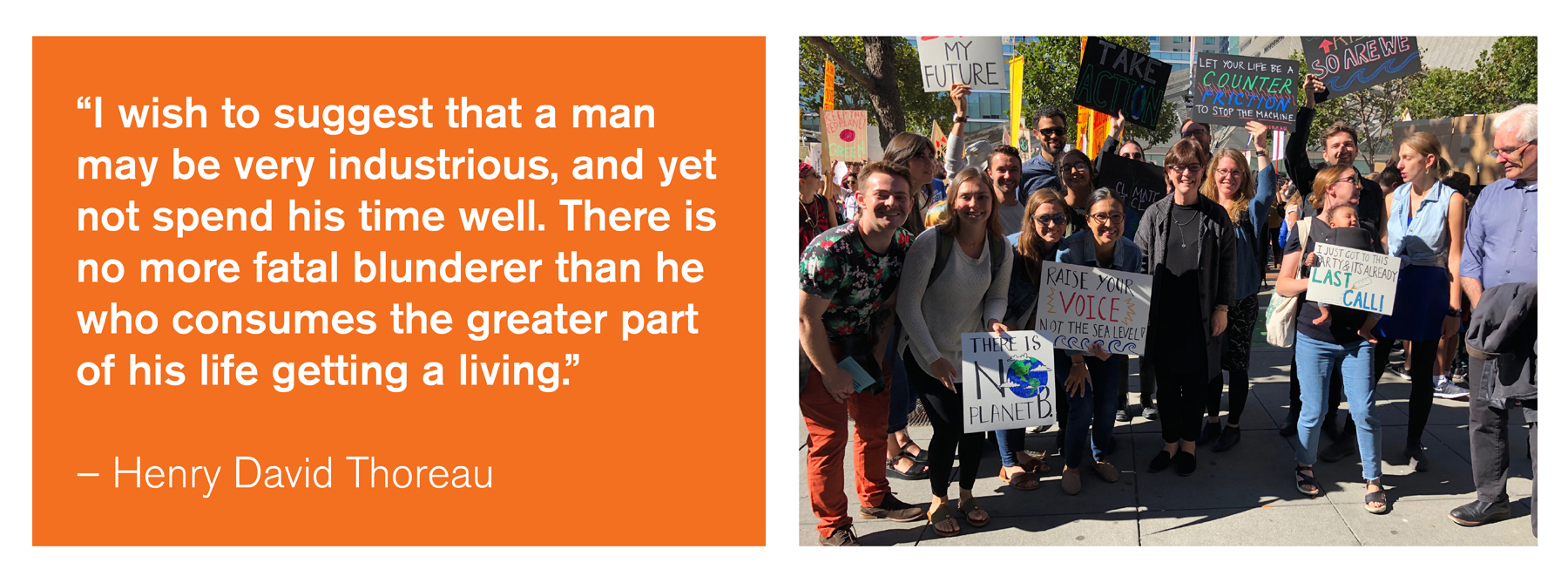
As an architect, I have a firsthand impression of the time constraints imposed on our profession. We are driven to provide valuable products and services efficiently, to optimize for a number of factors, from permitting deadlines to first-cost economic realities and logistical construction schedules. Time scales in strange ways; seeing a project through from concept design to completion somehow simultaneously takes both forever and no time whatsoever, and the decisions we make at each important milestone are critical to roll out a successful integrated design.
Layered on top of this matrix of time pressure is the issue of climate urgency. It is hard to avoid reminders either indirectly (in the press) or experienced directly here in Northern California (with drought patterns and an expanding wildfire season) that climate change has arrived, and the need for radical industry transformation is becoming increasingly urgent. Faced with these experiences and reminders, there are days when my optimism wavers; the evidence we already see is costing lives and endangered species are becoming extinct. However, most days, I like to believe that we are building towards a zero-carbon future, and I like to believe that we are designing spaces, communities and cities at the leading edge of that movement. Some good news arrived in 2018: according to data from the U.S. Energy Information Administration, carbon dioxide emissions in the U.S. building sector have dropped by 20.2% below 2005 levels, even as the country’s building stock grew by 30 billion square feet in that same period. This is the result of improvements to the energy efficiency of buildings, as well as decarbonization in the power sector. This shows that, as architects, we have a powerful role to play, given the proportion of energy and emissions allocated to the building sector.